Building a DIY slide can be a fun and rewarding project for those who enjoy hands-on construction. Whether you’re looking to add some excitement to your backyard or create an indoor play area for your children, building your own slide is a great way to achieve this goal. However, it’s important to approach the project with careful planning and attention to detail in order to ensure safety and durability.
In this article, we will provide step-by-step instructions for building both indoor and outdoor DIY slides. From selecting materials and tools to constructing the frame, platform, and slide itself, we will cover all aspects of the process. Additionally, we will offer tips for customizing your slide design to fit your specific needs and preferences. By following our instructions and guidelines, you can feel confident in creating a safe and enjoyable play feature that will bring joy to yourself or others for years to come.
Planning And Preparation
Building a DIY slide requires careful planning and preparation. Just like any other construction project, it is crucial to consider budget considerations and space limitations. Before embarking on this exciting endeavor, determine how much you are willing to spend. This will help you choose the appropriate materials and equipment that fit your budget. It is also essential to consider space limitations since the size of your slide will depend on the available area.
Once you have identified your budget and space requirements, it’s time to start planning. Sketch out your design idea on paper or use computer-aided design software to create a 3D model. This step allows you to visualize how your finished slide will look and make necessary adjustments before starting construction.
Before diving into building the DIY slide, ensure that all necessary permits are secured. Check with your local zoning office for regulations regarding height limits, safety requirements, and property line setbacks. Following these regulations helps avoid legal issues in the future.
Transitioning into the next section about safety considerations, it is essential to keep in mind that constructing a DIY slide requires more than just creating an enjoyable play area for kids; safety should be a top priority at every stage of the project.
Safety Considerations
When building your own DIY slide, it is important to prioritize safety. Common injuries associated with slides include bruises, scrapes, and even fractures. These can occur when the slide is not properly installed or maintained, or when individuals do not use the slide safely.
To prevent these injuries, it is important to use safety equipment such as helmets, knee pads, and elbow pads. Additionally, the area surrounding the slide should be free of any obstacles or hazards that could cause injury. It is also important to supervise children while they are using the slide and teach them how to use it safely.
By taking these precautions and using proper safety equipment, you can greatly reduce the risk of injury when building your own DIY slide. In the next section, we will discuss selecting materials for your slide construction project and how to ensure they are safe for use.
Selecting Materials
Careful consideration of materials is crucial when constructing a DIY slide. Choosing the right materials will ensure the longevity and safety of your slide. When selecting materials, it is essential to keep in mind both cost-effective alternatives and sustainability options.
One cost-effective alternative to consider is using PVC piping for the frame of your slide. PVC pipes are lightweight, durable, and easy to work with. Additionally, they are affordable and readily available at most hardware stores. For the actual sliding surface, you may want to consider using polycarbonate sheets. Polycarbonate sheets offer excellent impact resistance and can withstand extreme temperatures, making them ideal for outdoor use.
If sustainability is a priority for you, there are eco-friendly options available as well. One such option is reclaimed wood for the frame of your slide. Reclaimed wood adds character to your project and reduces waste by repurposing old materials. For the sliding surface, recycled plastic boards could be an environmentally friendly choice.
In selecting materials for your DIY slide project, remember that balancing cost-effectiveness with sustainability is key. Consider incorporating both eco-friendly options and budget-friendly alternatives into your design plan to create a safe and long-lasting structure that aligns with your values. Next up in this guide on building a DIY slide will be discussing tools needed to get started on this exciting project!
Tools Needed
Before starting any construction project, it is important to have the necessary tools and equipment. In order to build a DIY slide, you will need a few essential tools. These include: a circular saw, jigsaw, drill, hammer, measuring tape, pencil, level, square and clamps. It is important to ensure that all of your tools are in good working condition before beginning your project.
Tool organization is also an important aspect of any construction project. Before beginning your DIY slide construction, make sure to organize your tools in a way that makes them easily accessible during the building process. Keeping your work area clean and tidy can help you avoid accidents or injuries while working on your project.
In addition to having the right tools and keeping them organized, it is important to prioritize safety when building a DIY slide. Always wear appropriate safety equipment such as gloves and eye protection while working with power tools or handling materials. Take time to read instructions carefully before using any tools or equipment so that you understand how they work and how to use them safely.
Now that you have gathered all the necessary tools and organized them properly for easy access during the construction process, it is time to start measuring and cutting the frame for your DIY slide.
Measuring And Cutting The Frame
The success of building a DIY slide largely depends on the quality and accuracy of the frame design. The frame is what holds the slide up, so it’s important for it to be strong and sturdy enough to support the weight of those who will be using it. Before measuring and cutting, it’s important to decide on the type of material you want to use.
When designing your frame, there are several material alternatives available. Popular options include PVC pipes, wood planks, and metal tubing. Each comes with its own advantages and disadvantages such as cost, durability and ease of construction. Some materials may be easier to work with than others, while some might offer more strength or flexibility when constructing your slide.
Here are a few tips for measuring and cutting your frame:
- Double check your measurements before making any cuts
- Use a saw that is appropriate for the material you are using
- Mark all cut lines clearly before starting
- Always wear protective gear such as gloves and goggles
With these tips in mind, you’ll be well on your way to constructing a solid frame for your DIY slide project. In the next section, we’ll discuss how to assemble the frame without compromising safety while keeping costs low.
Assembling The Frame
After measuring and cutting the frame, it’s time to assemble it. The process of putting the pieces together may vary depending on the design options you have chosen. Some slide designs require welding or screwing the frame together, while others use interlocking joints for a secure fit.
When assembling your DIY slide frame, keep in mind that cost estimation is an important factor. Consider the materials you are using and how they will affect your budget. It’s also essential to choose quality materials that can withstand outdoor elements if you plan to install an outdoor slide.
Once you have completed assembling the frame, it’s time to move onto building the platform. This step involves constructing a base that supports the slide and provides a safe landing for riders. In the next section, we will discuss how to build a sturdy platform that can accommodate your DIY slide design.
Building The Platform
As we move forward in this DIY slide construction tutorial, the next step is building the platform. The platform is a crucial component of the slide, as it provides support for the rider’s weight and ensures a smooth sliding experience. To begin, use your drill to create holes in each of the four corners of your plywood sheet. These holes will serve as anchor points for attaching the platform to the frame.
Once you have created the anchor points, you can move on to building the frame for your platform. It is essential to ensure that your frame is sturdy and can hold up against weight and pressure. You can use lumber or PVC pipes to build your frame, depending on your preference and budget. Cost-saving tips include using scrap wood or purchasing pre-cut lumber at discount stores.
After constructing your platform’s frame, you can attach it to your slide’s mainframe using screws or bolts. Decorative touches such as painting or staining are optional but can add an aesthetic appeal to your finished project. With these steps completed, we will now move on to attaching the platform to the frame without compromising safety and stability.
Attaching The Platform To The Frame
After building the platform, the next step is to attach it to the frame. This requires selecting appropriate types of fasteners that can withstand the weight capacity of the slide and ensure stability. The most commonly used fasteners are screws and bolts, which provide a secure hold for the platform.
When attaching the platform, it is important to ensure that it is level and flush with the frame. This can be achieved by using a spirit level and making necessary adjustments before securing the fasteners. It is also recommended to use washers with bolts or screws to prevent them from sinking into the wood.
Assembling a DIY slide requires attention to detail and careful planning. By choosing appropriate types of fasteners and ensuring that they can support the weight capacity of the slide, you can create a sturdy structure that will provide hours of entertainment for your family and friends. Next, we will discuss creating the slide, which is an exciting step in this process.
Creating The Slide
As we move into the creation process, let’s take a minute to imagine the final product. Picture yourself sliding down the perfect slide you’ve built with your own hands, feeling the wind in your hair and the thrill of knowing that you created this. That’s what DIY is all about!
Design options are endless when it comes to building your own slide. You can choose from a variety of materials, including wood, plastic, metal, or even repurposed items like old tires or pallets. Depending on your budget and design preferences, there are many ways to customize your slide to fit perfectly in your indoor or outdoor space.
Cost estimation is an important factor to consider when planning for any DIY project. The cost will vary depending on the materials used and the size of the slide. However, building your own slide can be more cost-effective than purchasing a pre-made one – not to mention more rewarding! Be sure to plan out your budget ahead of time so you know what supplies you need and can stay within your means.
As we move forward in our DIY slide construction journey, let’s explore how adding support braces can ensure safety and stability for those who will use it.
Adding Support Braces
1.When constructing a DIY slide, material selection is paramount in ensuring the slide is safe and long-lasting. 2.The use of robust materials such as metal or hard plastic must be carefully considered in order to provide adequate support for the structure. 3.Reinforcement placement is also important for ensuring the slide is structurally sound. 4.Strategic placement of support braces can help to evenly disperse the weight load, ensuring the slide can handle use from multiple individuals.
Material Selection
When it comes to building a DIY slide, choosing the right materials is crucial. The materials you select will determine the longevity and safety of your slide project. Therefore, it’s essential to consider several factors before settling on the best options for your slide. You’ll need to think about how much weight the slide will hold, what kind of climate you live in and whether it will be used indoors or outdoors.
DIY slide material options include wood, plastic, metal, and fiberglass. Each of these materials has its own advantages and disadvantages. For example, wood is a popular choice because it’s affordable and easy to work with, but it may not be as durable as other options over time. On the other hand, metal is more robust and can withstand harsh weather conditions but may rust if exposed to moisture for an extended period.
When selecting materials for your DIY slide project, it’s crucial to find ones that are both sturdy and safe. The last thing you want is for your slide to collapse or break after just a few uses. Therefore, make sure that you choose high-quality materials that are designed to withstand constant use and heavy loads. By taking the time to select the right materials for your DIY slide project, you can ensure that your finished product is both functional and safe for years to come.
Reinforcement Placement
When it comes to constructing a DIY slide, adding support braces is essential for ensuring the safety and longevity of your project. Proper reinforcement placement is crucial to prevent the structure from collapsing or becoming unstable over time. As a DIY slide construction expert, I recommend using high-quality materials and following the proper technique for reinforcement placement.
To start, you’ll need to gather the necessary materials, including brackets, screws, bolts, and wood glue. These materials should be strong enough to hold up against constant use and heavy loads. Once you have your materials ready, it’s time to start placing your support braces. The key is to distribute the weight evenly across all sides of the slide to prevent any weak spots.
One effective technique for proper reinforcement placement is to add diagonal braces on both sides of the slide. These braces will provide added stability and support while also preventing any lateral movement. Additionally, it’s essential to secure all brackets with screws or bolts tightly. By taking these steps in reinforcing your DIY slide properly, you can ensure that it will be safe and functional for years to come.
Sanding And Finishing
With the support braces in place, it’s time to focus on sanding and finishing the slide. The goal is to create a smooth surface that is safe for children to use. Begin by using a coarse-grit sandpaper to remove any rough spots or splinters. Work your way up to a finer grit until the surface is completely smooth.
Once the slide is sanded, it’s time to choose a staining technique. There are several options available, including traditional stains, paint-on stains, and wood dye. Each provides a different level of protection and aesthetic appeal. Consider your personal preference as well as the climate in which the slide will be used when deciding which option to choose.
Finally, after applying your chosen stain or sealant, be sure to add surface protection for added durability. This may include adding a clear coat or applying wax for an extra layer of protection against water damage and other types of wear and tear. With proper preparation and care, your DIY slide will provide hours of safe and enjoyable fun for children of all ages! Next up: installing the slide (outdoor).
Installing The Slide (Outdoor)
Once the slide design is ready, it’s time to install it outdoors. The first step is to choose the perfect spot for it. You need to find a flat area that has no rocks, tree roots or any other obstacles that can cause an uneven surface. Also, make sure there are no underground pipes or cables running through the area you’ve chosen.
Before you start digging, you need to check with your local municipality for any permits required for installing a structure like this. Once you have the necessary permits and approvals, you can start digging the foundation for your slide. Excavate the area about 6 inches deep and fill it with gravel to provide a stable base for your slide.
Landscaping integration is an essential aspect of installing a DIY outdoor slide. The surrounding landscaping should be designed in such a way as to complement your slide and create an overall aesthetic appeal. You can use shrubs and flowers around the perimeter of your slide area or add some decorative stones along the path leading up to your new outdoor attraction. A well-designed landscape will enhance the visual impact of your slide while also keeping it safe from potential hazards.
With all these steps completed, you’re now ready to mount the slide indoors!
Mounting The Slide (Indoor)
Now that you have successfully installed the slide, it’s time to move on to mounting it indoors. Before you start, make sure you have all the necessary tools and equipment ready. You will need a drill, screws, brackets, and a leveler. Additionally, keep in mind that the indoor slide should be mounted on a sturdy surface like concrete or wood.
Anchoring options are crucial when mounting an indoor slide. You can either anchor it directly to the floor or use brackets and anchors to secure it to the wall. The latter option is preferred as it provides more stability and reduces the risk of accidents. When choosing brackets and anchors, ensure that they are sturdy enough to hold up against the weight of your slide and its maximum capacity.
Weight capacity is another important factor to consider when mounting an indoor slide. Most DIY slides have a weight capacity of 250-300 pounds. However, if you plan on using it for commercial purposes or with multiple users at once, you might want to invest in a heavier duty slide with a higher weight capacity.
Customizing your design is an excellent way to add personality to your DIY slide project. You can paint it in different colors or add stickers for decoration. You can also customize the size and shape of your slide according to your preferences and available space. Whatever design decisions you make, remember safety should always come first when building and using your DIY indoor slide.
Customizing Your Design
Now that you have the basic slide design, it’s time to add your personal touch! One way to customize your slide is through color options. You can choose from a range of colors that will match the theme of your home or backyard. If you’re building an indoor slide, you can go for bright and bold colors to make it more fun for kids. On the other hand, if you’re building an outdoor slide, you can opt for natural colors like brown or green to blend with the surroundings.
Another way to customize your slide is by adding accessories. Slide accessories are a great way to enhance the functionality and aesthetics of your slide. Some popular accessories include handles, stairs, and tunnels. Handles provide additional support and safety while climbing up or down the slide. Stairs provide an easier access point for younger children who may not be able to climb up the ladder. Lastly, tunnels add an element of adventure and excitement as children slide through them.
By customizing your design with color options and slide accessories, you can create a unique and personalized slide that meets your specific needs and preferences. So take some time to think about what kind of look and feel you want for your DIY slide project.
Next up: maintenance and care.
Maintenance And Care
Just like any other structure, a DIY slide requires regular maintenance to ensure its longevity and safety. It’s important to keep the slide clean and free of debris, as well as inspecting it for any signs of wear and tear. One way to protect the wood from weathering is by staining it with a sealant. This not only adds aesthetic value but also acts as a protective barrier against harmful UV rays and water damage.
When it comes to stain options, there are many choices available on the market. Some stains may offer more durability while others are designed specifically for outdoor use. It’s important to consider which stain will best suit your needs based on factors such as climate, amount of usage, and desired color. Additionally, make sure to follow manufacturer instructions when applying the stain for optimal results.
Weather protection is another essential aspect of maintaining your DIY slide. Make sure it’s protected from harsh weather conditions such as rain or snow by covering it with a tarp or sheet during inclement weather. Also, periodically checking for any loose or damaged parts can prevent accidents or injuries from occurring.
By following these simple maintenance tips, you can ensure that your DIY slide lasts for years to come. Staining with an appropriate sealant and protecting it from harsh elements will not only extend its life but also provide a safe play environment for children. Remember to always prioritize safety first when using your DIY creation!
Conclusion
In conclusion, building a DIY slide can be a fun and rewarding project for those who have the necessary tools and materials. It is important to carefully plan and prepare for the project, taking into consideration safety considerations such as proper installation and maintenance of the slide.
Selecting high-quality materials is essential to ensure durability and longevity of your slide. Measuring and cutting the frame accurately is also crucial to ensure a stable structure that can withstand regular use.
Customizing your design can add an extra touch of creativity to your DIY project, making it unique and personalized. Remember, however, that safety should always be a top priority when making any modifications.
As we say in the world of DIY construction: measure twice, cut once. Taking careful steps throughout the process will ultimately lead to a safe, enjoyable slide that you can enjoy with family and friends for years to come.
Image Credits
- “OR 42 slide Dec. 24, 2015” by OregonDOT (featured)

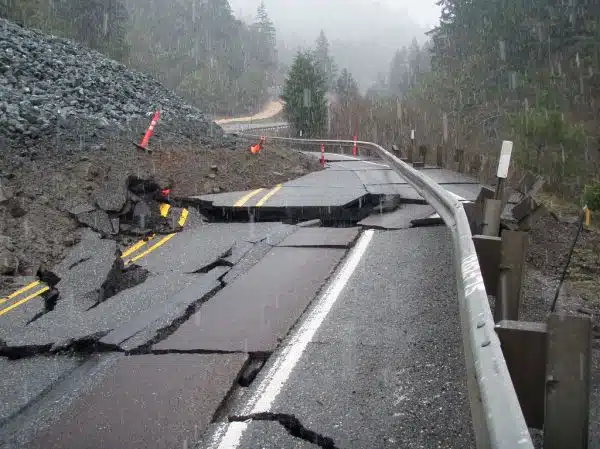


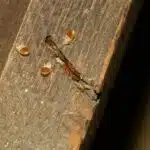

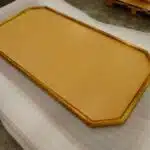
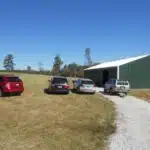




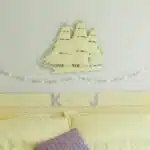
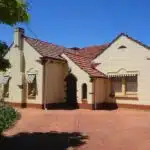

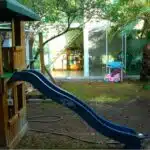

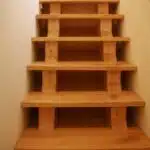





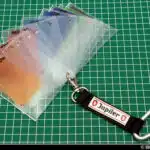

![How To Repair Rotted Wood 25 Texture : Altario Buick Estate Wagon : Rotting Faux Wood Paneling [1 of 2]](https://green-life.blog/wp-content/uploads/2023/05/z1CersK-gCjq-150x150.jpg.webp)



